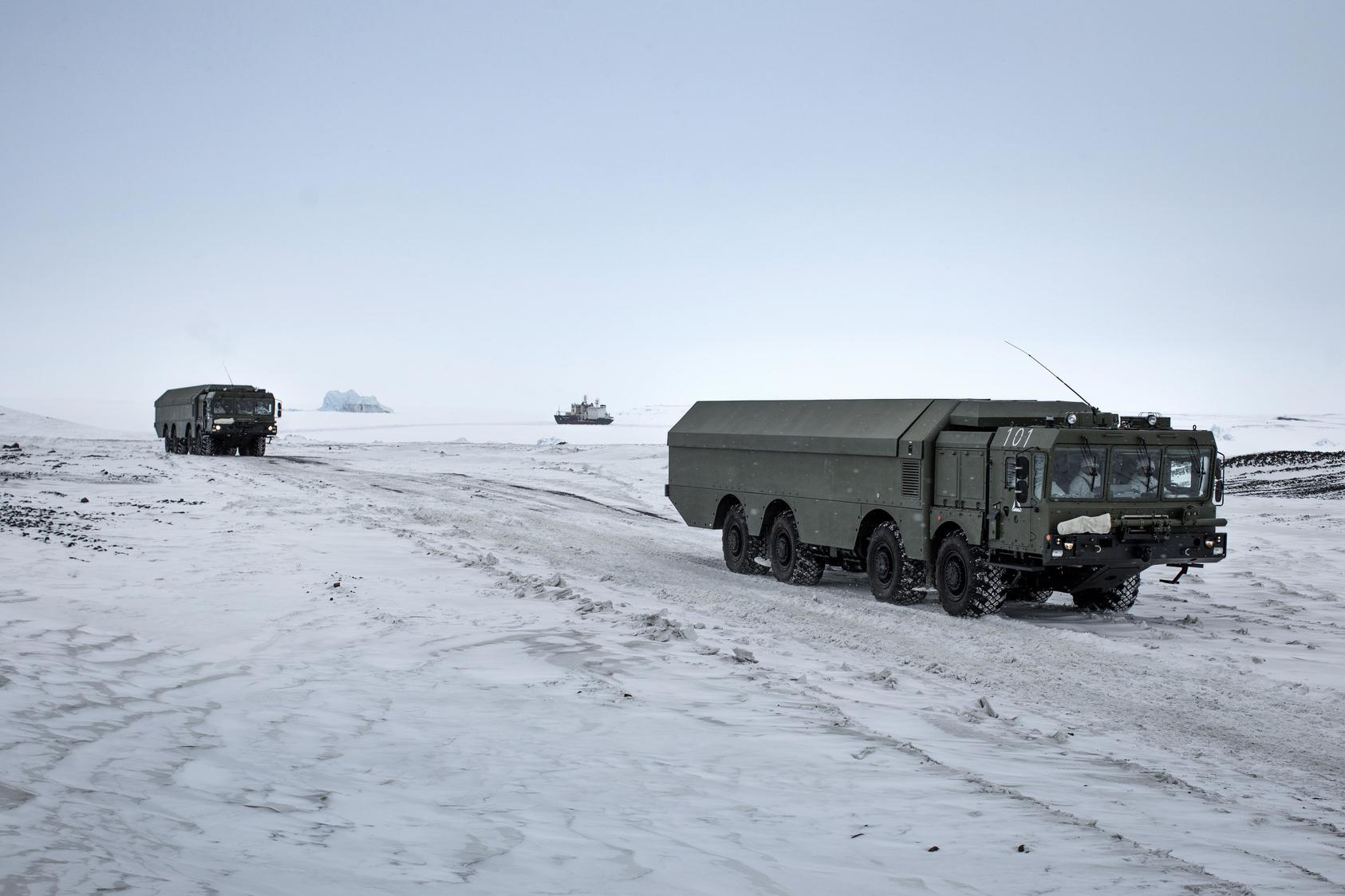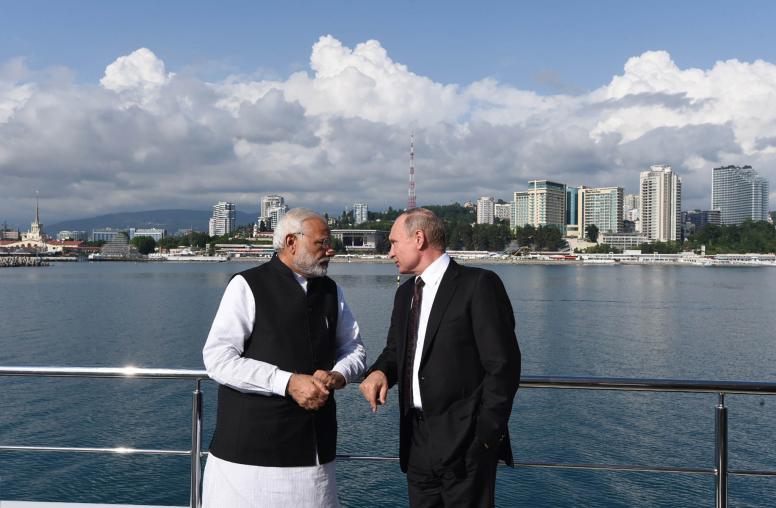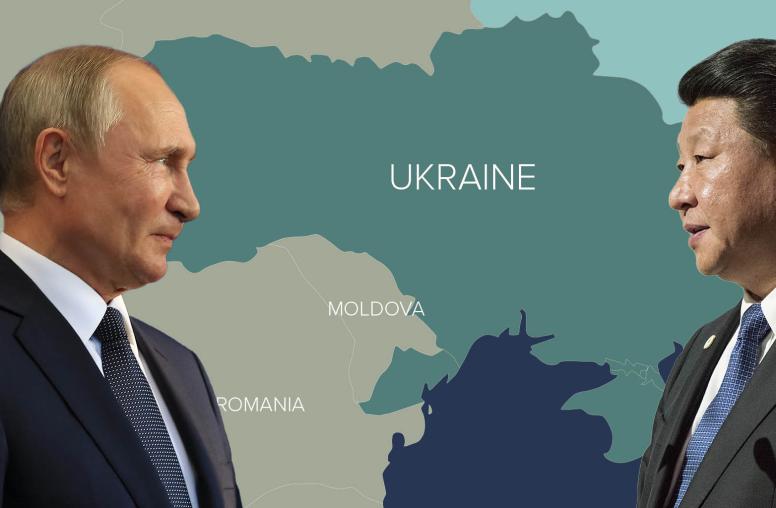Global Peace Needs a Clear U.S. Reply to Putin’s Nuclear Threat
Ideas for ending Russia’s Ukraine war must sustain deterrence against nuclear or chemical attack.
As signs increase that Russia’s invasion of Ukraine is failing to achieve President Vladimir Putin’s goals, he has hinted menacingly at using a chemical or nuclear weapon. This leads some western analysts to suggest offering Putin a face-saving exit from his crisis. That would be a simplistic answer to a complex challenge, rather than the finely balanced response that is needed. Worse, it would be dangerous, signaling to governments worldwide that armed aggression — especially with weapons of mass destruction at hand — is a sure path to wielding international power.

Why a Nuclear Strike Is Unlikely
Some U.S. analysts worry that humiliation for Putin will lead to Russian use of chemical or nuclear weapons — and so the West should allow him a face-saving way out of his predicament. While diplomacy should as always avoid any needless risk of escalating conflict, the reality is that Russian use of nuclear weapons in Ukraine remains unlikely. Despite Russian rhetoric, CIA Director William Burns assured Congress last month that the United States was seeing no “practical evidence” suggesting Russia is preparing nuclear weapons for imminent use.
It is unclear what Russia would actually gain by using nuclear weapons. The Kremlin is arguing at home that it is fighting to protect the lives of Russian-speakers in Ukraine. Russian forces are fighting in the areas Russia has indicated it wants to annex. Using a nuclear weapon on that battlefield would threaten the very lives Russia says it is defending.
Russia could seek to intimidate Ukraine and its supporters by detonating a small nuclear weapon. But indications suggest that Putin’s saber-rattling already is frightening Russians themselves. A “demonstration strike” in Ukraine poses a risk to Putin of further alarming, and dividing, the Russian elites via which he exercises power. Finally, Russian military and nuclear doctrine limits a Russian use of nuclear weapons to two situations: responding to the use of a weapon of mass destruction against Russia or its allies, or when conventional warfare threatens Russian nuclear command and control or the existence of the state itself. The war in Ukraine presents no such case.
A Russian use of chemical or biological weapons would be more difficult to confirm and, thus, rule out. Russia is a signatory to the global ban on making or using chemical weapons, but its military partnership with Syria, which has used them, and its own chemical attacks on dissenters in Russia and abroad has made its use of chemical weapons in Ukraine more imaginable. Ukrainian forces in Mariupol accused Russia of using chemical weapons, but their reports have not been confirmed. No other indications of chemical weapons use have emerged, including in the slow Russian effort to clear the Azovstal factory complex. Like with nuclear weapons, U.S. officials have said they have seen no indication Russia is planning on using chemical or biological weapons.
Why Even the Threat Is Dangerous
Even if Russia’s threats may be empty, it remains vital for the United States to respond strongly to them. President Biden has said the United States will respond to a Russian use of a weapon of mass destruction (WMD) but has declined to spell out what the response would be. While publicizing operational details would indeed pose risks, some degree of specificity would be useful. A too-vague warning to the Kremlin runs the risk of appearing like an adjustable “red line.” The administration may already be providing this detailed information privately to the Kremlin. If not, it should be.
Arguments that the United States should urge Ukraine to rush to a negotiated solution to prevent Putin from acting rashly are also dangerous. This response to his saber-rattling would send the message to autocrats worldwide that the mere threat to use WMDs is enough to accomplish foreign policy aims, or, at the very least, avoid punishment for their misdeeds.
Instead of finding ways to help extricate Putin from this crisis of his own making, the United States and its allies need to be even more resolute in their resistance to Russian aggression, clearly spelling out the consequences for Russia and Putin should he choose to use WMDs. (Suggestions are below.) We must then be prepared to follow through on our warnings.
Why Ukraine Is Especially Important
It is particularly important that the United States makes it clear we will respond if WMDs are used against Ukraine. In 1994, Ukraine became one of four countries that voluntarily relinquished their nuclear arsenals and joined the Nuclear Non-Proliferation Treaty. In exchange, the United States, the United Kingdom and the Russian Federation issued the Budapest Memorandum, committing “to seek immediate United Nations Security Council action to provide assistance to Ukraine, as a non-nuclear-weapon state party to the Treaty on the Non-Proliferation of Nuclear Weapons, if Ukraine should become a victim of an act of aggression or an object of a threat of aggression in which nuclear weapons are used.”
While the letter of the agreement requires minimal response from the parties (referral to the U.N. Security Council), failure to defend Ukraine would ultimately encourage nuclear proliferation with the message that nations’ only real security lies in acquiring their own nuclear forces. While Ukraine’s history makes nuclear weapons a special case, the United States should also respond forcefully if Russia violates the international conventions prohibiting chemical or biological weapons use. Ukraine is not a U.S. ally, but the United States took on some responsibility for ensuring Ukrainian security when it persuaded Ukraine to relinquish its nuclear forces.
Possible Responses
The United States would have a range of possible responses to a Russian use of weapons of mass destruction.
- The United States could use conventional weapons to destroy Russian units responsible for the use of weapons of mass destruction, whether those forces were in Ukrainian or Russian territory. The danger of such a response is that it would engage the United States in direct military conflict with Russia. While such conflict would not automatically cross Russia’s doctrinal threshold for a nuclear response (a threat to Russian nuclear command and control or the existence of the Russian state) it could still risk escalation. It would also, however, show the world that the United States is serious about defending states that renounce the development and use of nuclear weapons.
- The United States could escalate its military assistance to Ukraine. U.S. provision of more destructive weapons or actionable intelligence could help Ukraine carry the battle to Russia itself. Again, the risk is escalation of the war, as Russia may interpret this as direct U.S. participation in the war.
- The United States (and global partners) could increase sanctions on Russia. This response is not significantly different than current activities and would not as notably highlight the difference between Russian conventional and nuclear aggression. It is uncertain that would-be nuclear powers observing the response to Russia’s attack would consider this sufficient defense of a non-nuclear power.
- The United States could help Ukraine by working with other international and regional organizations to increase the costs on Russia for its unacceptable use of force. For example, the expansion of NATO to include Finland and Sweden is a clear signal that invading Ukraine will not advance Putin’s vision for Russian security.
These options could be implemented separately or as a package. The most important element, however, is that they be discussed publicly and privately with Russia prior to any Russian WMD use. To preserve any reliable hope of sustaining the world’s nuclear non-proliferation regime, the United States must draw a bright red line against any Russian WMD use and must convince Russia that the crossing of that line will guarantee a U.S. response.
Responding to Russian WMD saber rattling is not easy. It requires a delicate balance of not terrifying our populations, alienating allies, and weakening support for the U.S.-led defense of Ukraine — yet also not letting the Kremlin think we are bluffing. Responding to actual WMD use is even more fraught, with a risk of escalation of violence or expansion of the war. Not doing either, however, is the most dangerous option. That would signal that military force is an acceptable way to achieve foreign policy ends, and that not having weapons of mass destruction leaves a country defenseless against nuclear-armed powers. It could mean the end of the Nuclear Non-Proliferation Treaty and what is left of the international arms control regime.
The views expressed in this article are those of the author and not necessarily those of the U.S. government.



